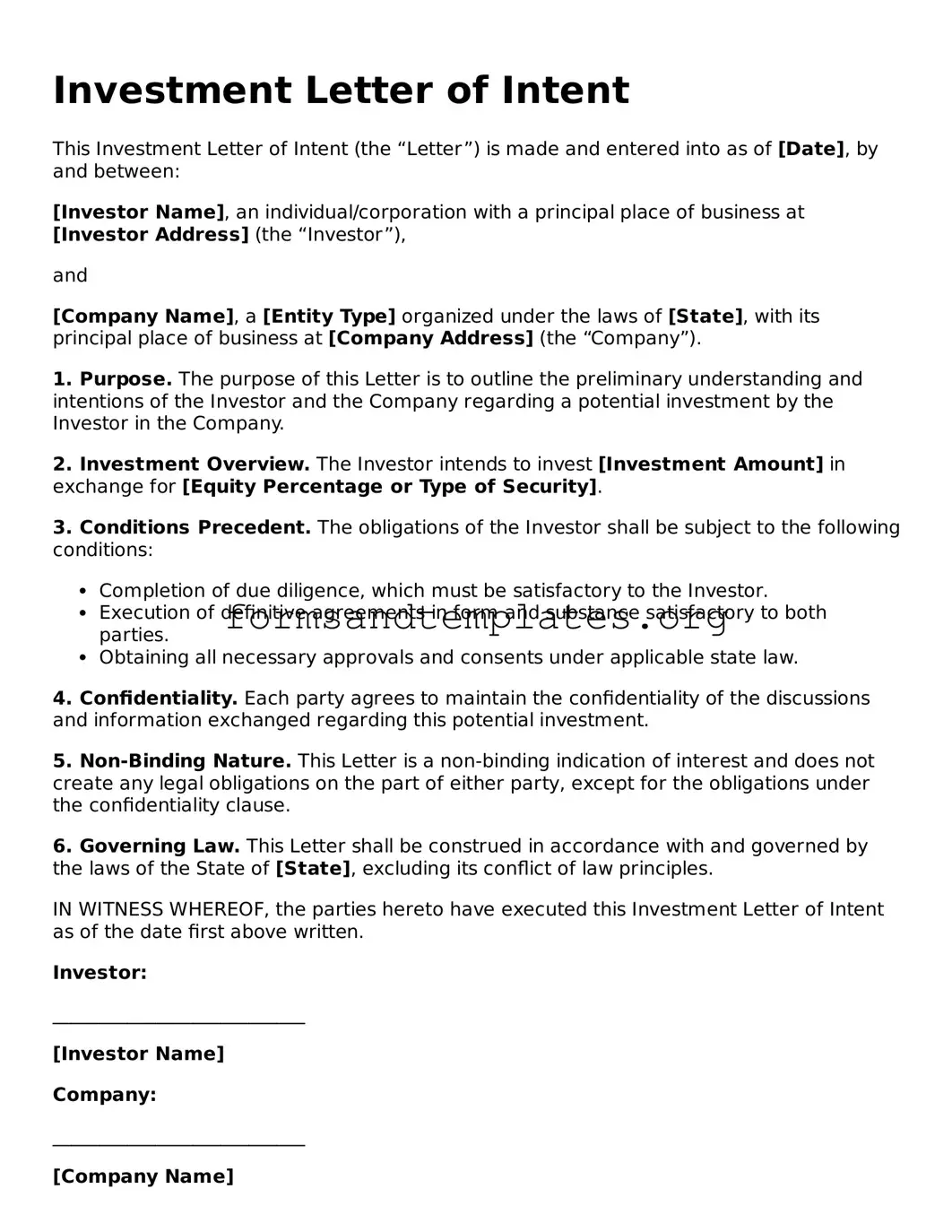Investment Letter of Intent
This Investment Letter of Intent (the “Letter”) is made and entered into as of [Date], by and between:
[Investor Name], an individual/corporation with a principal place of business at [Investor Address] (the “Investor”),
and
[Company Name], a [Entity Type] organized under the laws of [State], with its principal place of business at [Company Address] (the “Company”).
1. Purpose. The purpose of this Letter is to outline the preliminary understanding and intentions of the Investor and the Company regarding a potential investment by the Investor in the Company.
2. Investment Overview. The Investor intends to invest [Investment Amount] in exchange for [Equity Percentage or Type of Security].
3. Conditions Precedent. The obligations of the Investor shall be subject to the following conditions:
- Completion of due diligence, which must be satisfactory to the Investor.
- Execution of definitive agreements in form and substance satisfactory to both parties.
- Obtaining all necessary approvals and consents under applicable state law.
4. Confidentiality. Each party agrees to maintain the confidentiality of the discussions and information exchanged regarding this potential investment.
5. Non-Binding Nature. This Letter is a non-binding indication of interest and does not create any legal obligations on the part of either party, except for the obligations under the confidentiality clause.
6. Governing Law. This Letter shall be construed in accordance with and governed by the laws of the State of [State], excluding its conflict of law principles.
IN WITNESS WHEREOF, the parties hereto have executed this Investment Letter of Intent as of the date first above written.
Investor:
___________________________
[Investor Name]
Company:
___________________________
[Company Name]
